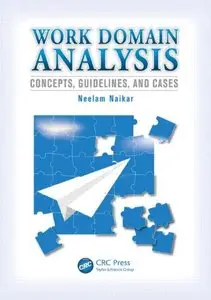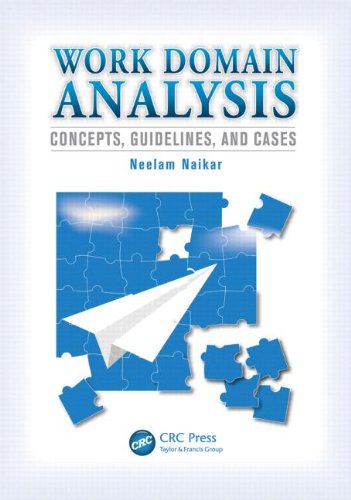Neelam Naikar, "Work Domain Analysis: Concepts, Guidelines, and Cases"
English | ISBN: 0805861297 | 2013 | 338 pages | PDF | 6 MB
English | ISBN: 0805861297 | 2013 | 338 pages | PDF | 6 MB
In complex sociotechnical systems such as military, health care, and nuclear power systems, poor performance or errors resulting from inadequate designs can have catastrophic consequences. Although considered challenging to learn and execute well, work domain analysis can be used as a framework to assist in the design of these systems. Work Domain Analysis: Concepts, Guidelines, and Cases helps you develop a deep understanding of this framework—not by oversimplifying the principles but by explaining its concepts and methodology in considerable depth.
Building on the foundational concepts of cognitive work analysis by providing the first comprehensive treatment of work domain analysis, the book begins with fundamental topics such as abstraction, decomposition, and structural means-ends and part-whole relations, clearly outlining the basic characteristics of a work domain model. It then explores more advanced topics such as the development of multiple models of a system and the distinction between causal and intentional systems and illustrates them with numerous examples across a range of systems including warships, libraries, and petrochemical plants. It also provides comprehensive guidelines for performing work domain analysis.
The author provides three detailed case studies that examine the impact, unique contribution, and feasibility of applying work domain analysis in industrial settings. These case studies demonstrate that work domain analysis can be used to address a range of problems beyond interface design, such as team design, training, and the evaluation of system design concepts. They also provide concrete illustrations of the guidelines for work domain analysis.
Without an appreciation of the variety of applications of work domain analysis, and its suitability for implementation in industrial settings, the benefits of this approach may not be fully realized. This book supplies the deep knowledge of this tool that will lead both to more powerful and innovative applications of the approach and to designs that support flexibility or adaptation in the workplace, making systems safer, healthier, and more productive for workers.



